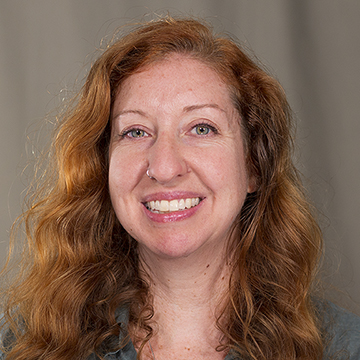Prevalence of Antibiotic-Resistant Bacteria in Sanitary Sewage
Widespread use and misuse of antibiotics has created a global health crisis, with antibiotic-resistant bacteria occurring more frequently and often exhibiting resistance to multiple drugs. Previous research on antibiotic resistance has focused mainly on pathogenic (disease-causing) organisms, but harmless bacteria (commensal organisms) found in the human microbiome can also acquire and share antibiotic resistance genes. These typically non-pathogenic bacteria are shed by humans from the gut (feces), skin, and oral cavity and are collected in sanitary sewers where they may selectively grow, share antibiotic resistance genes, and generally increase the global reservoir of antibiotic-resistant organisms. Although commensals are a well-established reservoir for antibiotic resistance genes, the extent of their distribution and mechanisms of resistance are relatively unknown. Sewage provides an integrated signal of human populations and has the potential to be used as a tool for assessment of the human-associated microbiome of entire communities. Our study focuses on members of the Enterobacteriaceae, a group of enteric bacteria that are responsible for multiple types of hospital-acquired infections, including pneumonia, urinary tract infections, and bloodstream infections. The goal of this study is to conduct a population-level assessment of antibiotic-resistant commensal bacteria by using sewage as a proxy for bacteria derived from the human microbiome. We will compare the susceptibility of commensal Enterobacteriaceae to clinical specimens from local hospitals.
This project addresses two major questions relevant to local and global health: 1) Can sewage be used as a diagnostic tool to investigate the type and abundance of commensal antibiotic-resistant bacteria on a population level? 2) By what mechanisms do commensal bacteria acquire resistance? To answer these questions, we collect primary influent (untreated) sewage and isolate enteric bacteria on media containing specific antibiotics, then screen these isolates for resistance to a suite of different antibiotic classes. We examine resistant isolates for plasmids carrying antibiotic resistance genes. Finally, we sequence the DNA of all bacteria in sewage before and after exposure to common antibiotics to determine the sensitivity of the entire community to specific drugs.
Microbial source tracking of septic system pollution
Many waterbodies in Northwest Indiana do not meet the USEPA criteria for recreational contact due to bacterial impairment. High concentrations of E. coli observed in these waters indicate the presence of fecal pollution, which may contain a variety human pathogens. Many watershed management plans for the region have identified poorly maintained or failing septic systems as a potential source of the E. coli contamination found in local waters. When septic tanks leak, fecal pollution can spread through surface runoff or groundwater and lead to contamination of local creeks, beaches, and lake water. However, septic pollution is but one of many potential sources of fecal pollution to NWI waterways. Wildlife, domestic pets, agricultural animals, and municipal infrastructure (sanitary and stormwater sewers) can also contribute to the E. coli problem. Determining the source or sources of fecal pollution present in a waterbody is the first step in managing and remediating the problem. Microbial source tracking (MST) is a technique used to differentiate sources of fecal pollution within a watershed. MST is based on the well-supported hypothesis that feces from different host organisms (e.g., humans, cows, wildlife) can be distinguished from one another based on the unique composition or characteristics of the bacteria present in that fecal material. Sequence-based microbial source tracking uses DNA sequencing of a bacterial marker gene to look for evidence of one or more types of fecal pollution by comparing sequences from environmental samples to sequences from sources (fecal inputs). We use a combination of traditional E. coli measurements, qPCR assays of human-specific markers, and community sequencing to determine the contributions of septic effluent to beneficial use impairments. This work is funded by the National Oceanic and Atmospheric Administration through the IN Lake Michigan Coastal Program.
Quantification of pathogens in beach sand
Water quality is monitored at public beaches throughout the swimming season (Memorial Day through Labor Day), but neither the USEPA nor the state of Indiana have equivalent recreational criteria for bacterial contamination of beach sand. Water quality has traditionally been used as a benchmark for health risks to beachgoers due to the possibility of ingestion while swimming or wading. However, recent studies suggest that sand may pose a greater risk for contracting a gastrointestinal illness or skin infection following a beach visit than full contact with water. Multiple homes along the lakeshore in Long Beach (IN) have experienced catastrophic septic system failures, with at least one septic tank completely exposed due beach erosion. To examine the potential human pathogens that may be associated with failing septic systems, we will sample sands in the Long Beach community along a ~1 km stretch of beach spanning the areas of known septic system failures, as well as Miller Beach (Gary, IN), which also has a high proportion of septic use, but no known catastrophic failures. We will analyze the sand and adjacent water for E. coli, human fecal bacterial DNA markers, and common waterborne pathogens. The magnitude of this risk is currently unknown, but it has the potential to negatively impact thousands of residents and visitors that utilize Indiana beaches. This experimental framework can be expanded to examine beach sands across other Great Lakes coastal communities with high densities of shoreline septic systems. The data generated will also provide information relevant to the growing international movement to include health criteria for recreational beach sands similar to water quality criteria. The work is funded by Illinois-Indiana Sea Grant.
For more information, please contact Dr. Fisher.



